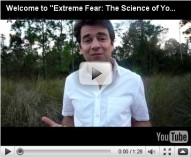 We were supposed to be living in a rational world. According to neoclassical economics, people are “rational agents” who logically assess their own best interests and then act accordingly. Like cogs in a Swiss watch, their behavior can be predicted and modeled.
We were supposed to be living in a rational world. According to neoclassical economics, people are “rational agents” who logically assess their own best interests and then act accordingly. Like cogs in a Swiss watch, their behavior can be predicted and modeled.
Thanks to the world’s ongoing economic paroxysms that view has largely gone out the window. Since 2007, everyone – investors, consumers, management— has seemingly jumped from panic to euphoria and now back to panic again. The economy not as a mathematical system so much as a collective madness.
John Coates is a uniquely well positioned to understand what’s going on. He spent 12 years as a trader in London and New York, working first for Goldman Sachs and then Deutsche Bank. What he saw in real life was totally at odds with economic theory. “It was the dot com bubble,” he recalls. “People had classic, clinical symptoms of mania. They were delusional, euphoric, over-confident — you couldn’t get them to shut up.”
Most traders worth their salt would have figured out how to turn this insight into a a play that would make them a killing on the market. But Coates wasn’t that guy. Instead of stoking his greed, it fueled his curiosity. He wondered: how does what physically goes on inside the brain and body affect the market’s ups and downs? So Coates ditched Wall Street, went back to school, and wound up a research professor in Cambridge University’s neuroscience department. Then, armed with scientific apparatus, he went back to the trading floor. He measured the hormone levels of professional traders as they went about their business, buying and selling. And what he found gave him a surprising insight. Read the rest of this entry »




